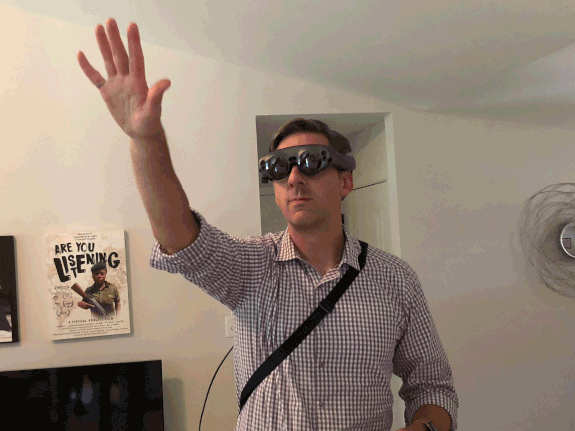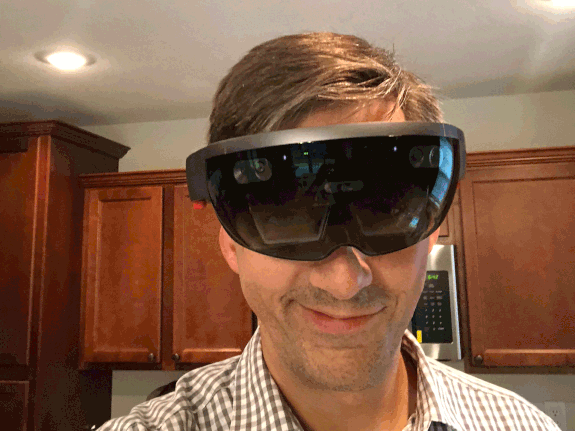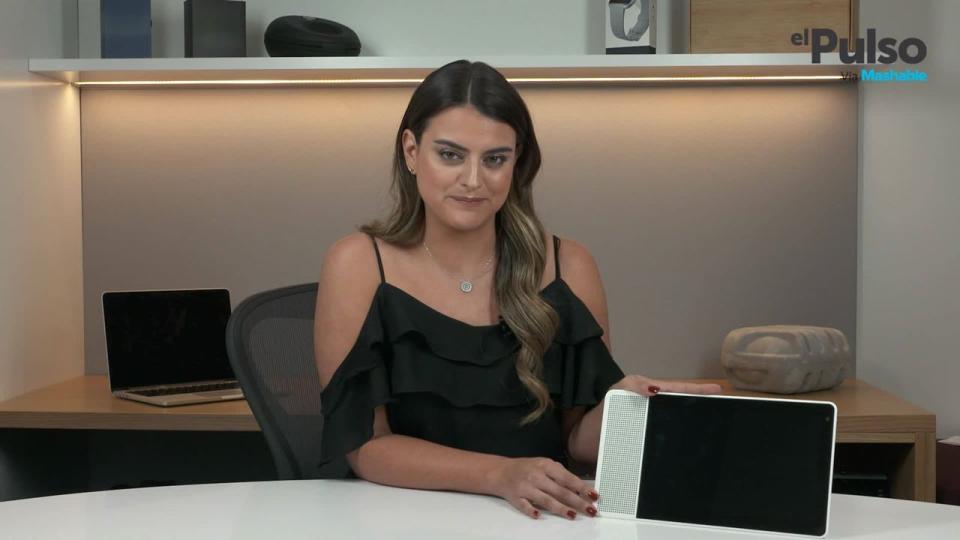How Magic Leap compares to Microsoft HoloLens

I first tried out Microsoft HoloLens a few years ago, a few months before its launch as a developer tool, and came away with similar impressions that many tech journalists had at the time: the tech was intriguing and impressive in some ways, but its limited field of view diminished the experience considerably.
I’ve used HoloLens a few times since then at demos and events, and although there have been improvements, they haven’t changed fundamental experience — or its limitations.
SEE ALSO: Apple takes a step towards its own version of Google Glass
Magic Leap, which launched its developer hardware in August, provoked similar reactions. Although the product is different from HoloLens in many ways — it’s more steampunk goggles than futuristic visor, and you need to carry around a small hockey-puck computer to make it work — most people who had hands-on time with the device had similar observations: Here was a very promising augmented-reality experience that also suffers from field-of-view limitations and a lack of compelling software (although the latter criticism may have changed on Wednesday, with the release of a Magic Leap version of Angry Birds).
But if you were to conclude from those general impressions that the two devices provide near-identical experiences, you’d be mistaken. There are clear differences between the two, rooted in each company's approach to augmented reality, the specific problems they’re trying to solve, and even the respective company cultures. Magic Leap also had the benefit of being able to act after HoloLens, learning from early criticisms of that device.
I recently got a chance not just to try out Magic Leap and HoloLens, but to do so back to back — a rare treat for expensive developer hardware made by competing companies. Thanks to a gathering of virtual- and augmented-reality storytellers arranged by StoryUp, a startup that helps produce immersive content, and the Reynolds Journalism Institute at the University of Missouri, I was able to use both products extensively. The exposure to both headsets in the same time and place gave me strong impressions of what each product is — and isn’t — good at.
Leaps and Lenses
This was my first exposure to the Magic Leap One. Most AR/VR headsets require a certain amount of precision when putting them on, but that goes double for Magic Leap since it requires that you carry around the tiny computer, called a Lightpack, that powers the experience. That means you have to remember to sling it around your shoulder before donning the goggles. You also need to make sure the supports in back are more on the top of your head than lower on your skull, which is a bit counterintuitive.

Image: Pete Pachal/Mashable
HoloLens isn’t much better in this department, but it’s better. Microsoft’s headset is a single, standalone unit, so there’s no purse computer. However, it’s also a bit weird in how it fits on your head: The visor connects to a headband via a hinge, and you’re often left wondering if you’ve put it on right once you’ve slipped it on and raised the visor back up. Still, I prefer Microsoft’s crank for tightening the headset on your head to Magic Leap’s traditional straps, but will admit the crank might feel weird for novice users.
Where Magic Leap surprised me the most was its field of view. Yes, it’s limited — the virtual images are confined to a rectangular zone right in front of you – but it’s not nearly as limited as HoloLens. There's no official spec for field of view, but some have pegged the vertical FoV at almost double that of HoloLens.
Smart hardware and software choices help, too. My first experience with Magic Leap was a demo “world,” where various patterns that resemble marine life appeared all around me, changing seemingly at random. When I reached out to touch the images, they’d react in different ways: seaweed-like tendrils would bend to my hand movements, and a jellyfish-like ball would rapidly spin and implode when I tried to grab it.

Image: Sarah Hill/Mashable
Magic Leap’s goggles do appear to cut off more peripheral vision than HoloLens. While that sounds bad, it also means the ratio of non-augmented space to augmented space in your gaze goes up, so naturally it feels more immersive. Whatever the reason, I was not immediately struck, and subsequently frustrated, by how limited the “magic” window was on Magic Leap.
By contrast, HoloLens keeps reminding you of what you're missing. After putting on the $3,000 headset, I took a look around the kitchen I was standing in and saw it was populated with several holograms, including very precise renderings of ballerinas, weightlifters, and breakdancers. But as I moved my head to check them out, parts of the holograms would get cut off as they moved out of the holographic part of the display.
This is the most annoying thing about HoloLens. When something interests you visually, you have a natural inclination to move closer so you can see it better. But instead of rewarding you, HoloLens’ limited field of view will cut off parts of the object you’re looking at, preventing you from taking it in fully. The closer you get, the more it takes you out of the experience.
A winner materializes
I didn’t experience the same level of frustration with Magic Leap. The software is a big part of this; most of the virtual objects I interacted with weren’t particularly large, so there was less chance of them being cut off.
The objects also tended to have a more ethereal quality to them, which does a lot to manage expectations: it’s less weird to see something ghostly start to disappear. By contrast, Microsoft’s very solid-looking holograms always looked strange when heads, feet, or arms were cut off.
That said, I have to concede realistic holograms are more of a point for Microsoft than against. The goal of HoloLens is to mix virtual objects with the real world, but in a way where the viewer sees and treats those objects as if they were real. And it succeeds: The holograms are almost always crisp and clear to the eye. I tried a couple of different apps on Magic Leap, but the virtual objects never felt quite as present.
So yes, HoloLens has a certain rigidity that the Magic Leap didn't match, but it wasn't always an advantage. The hand gestures that you use to manipulate the holograms need to be very precise, and those interactions often call up icons and menus in 3D space. In general, it feels like the experience was designed by engineers — it seems Microsoft can’t help but be Microsoft, even when it’s innovating.
I found using Magic Leap to be a much more natural experience. The only menu I really used was the main one that you call up with the remote. Otherwise I mostly just used my hands to goof around with things, walking through virtual environments, like a volcano-ravaged Guatemalan village in an AR experience created by The New York Times. At one point the headset got confused when it couldn’t figure out exactly where I went in the room when I moved from an open area to a tight space, but mostly it did a better job of creating an AR-enhanced environment than HoloLens.

Image: Pete Pachal/Mashable
If you’re getting the sense there’s a winner here, you’re right. Again, Magic Leap had the advantage of taking its time — thanks in part to an absurd amount of venture funding — and addressing early concerns of AR, so it's not an even playing field. But there are also some some fundamental differences in approach that help, too.
With its traditional dialog boxes, desktop-like iconography, and need for precise gestures, HoloLens feels much more like a developer tool. Microsoft has told a confusing story around HoloLens — at various points in its lifetime it’s been touted as a consumer, gaming, and enterprise device – which has led to some paralysis in the experience. Without a software experience to walk you through things, it’s not intuitive to use.
Magic Leap, on the other hand, feels like a level up. The graphics don't look better, but, using it immediately after HoloLens, I felt like an artist who’d just been given a slightly bigger canvas and a much better paintbrush. Both platforms still need a killer app to make them worthwhile, but at least with Magic Leap you’re thinking more about what you can see and do than what you can’t.
WATCH: The Lenovo Smart Display looks like a tablet and acts like one, too


 Yahoo Finance
Yahoo Finance 